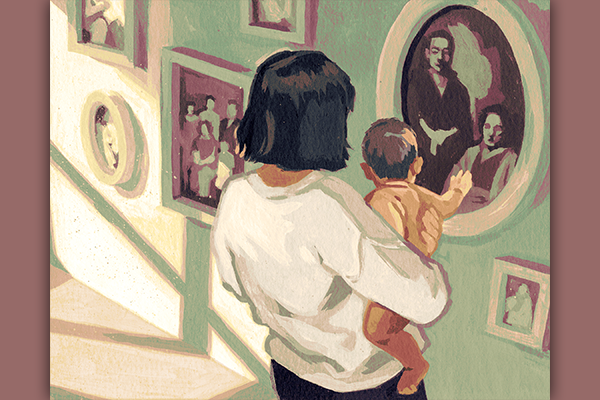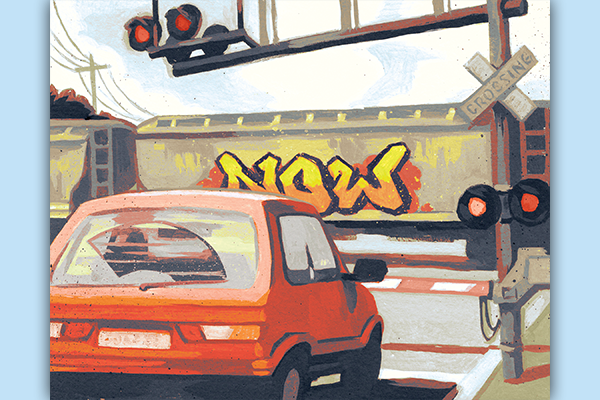“Now explain that to me one more time” were the first words I heard between a father and daughter when they joined me on the New York City subway 4 train. The family was on their way to Yankee Stadium to celebrate his birthday. Judging by his accent and the salt and pepper tufts of hair spilling out of his Yankee’s cap, he had made this ride many times before.
The daughter went on to explain that her friend, whom he had first known as a little girl, now had a different relationship to gender, identifying as neither boy nor girl. The friend now used they/them pronouns rather than she/her pronouns. That was the sticking point. “I can’t wrap my head around this,” the man said to his daughter. Still, he complied, at least until I switched trains. It’s a long ride to Yankee Stadium.
A blowout loss to the Toronto Blue Jays and a slightly impatient lecture from his teenage daughter may not have been the highlights of his day, but there was a sweetness to the scene that I found to be sympathetic. I’ve been the clever Brooklyn kid explaining my world to my parents who listen with a mix of curiosity and discomfort; I’ve also been the adult surprised by a young person’s insight and my own ignorance. Understanding is a worthy goal for our personal relationships. Growing appreciation for what distinguishes our loved ones from ourselves can deepen that love.
But cisgender Christians don’t need to understand the varied personal experiences of trans folks to stand in solidarity with them. We just need to know that they’re living with boots on their necks and that one of those boots is ours.
The church lives into the fullness of the gospel when it hurls itself toward the margins of society in search of Christ. The Catholic articulation of this value is called the preferential option for the poor and vulnerable. It is a theological, ethical, and political summation of the faith: God has a special love for those who are vulnerable and we are to emulate that love in our interpersonal and political dealings, organizing our communal lives toward that end.
In short, the gospel demands that the church asks some basic sociological questions to help it navigate difficult social waters. In regard to trans people, our questions should be informed by the work of people like organizer and writer Dean Spade, who wrote the book Normal Life. How does our society, with all its norms, move trans people closer to vulnerability and death, or closer toward security and life?
If the church were to answer those questions honestly, we would recognize that our communal norms and national laws manufacture insecurity for trans people. For instance, in a national survey of 27,000 trans people conducted by the National Center for Transgender Equality (NCTE), it was found that nearly a third of respondents said they had experienced homelessness in their lifetimes.
Nearly 30 percent of homeless trans people reported being turned away from homeless shelters because they were trans, according to a study from the Department of Housing and Urban Development. Even if they can get into a shelter, they face staggering rates of gender-based violence. The NCTE study found 70 percent of respondents reported “some form of mistreatment,” including harassment and physical or sexual assault in homeless shelters, which are often sex-segregated facilities. The church’s prophetic mission is denouncing the conditions that produce homelessness and sexual violence for anyone, and standing in solidarity with all who experience such evils.
On the margins, the journey from being declared “abnormal” to increased vulnerability to premature death is a short one. A March decree from the United States Conference of Catholic Bishops prohibited Catholic hospitals from offering trans people gender-affirming health care. The doctrinal note entitled “Moral Limits to Technological Manipulation of the Human Body,” specifically prohibits interventions “whether surgical or chemical, that aim to transform the sexual characteristics of the human body into those of the opposite sex or take part in the development of such procedures.” Given that the document is framed around the “unnaturalness” of the trans experience, trans patients are effectively discouraged from seeking any sort of care from Catholic hospitals, which account for one in six acute care hospital beds in the U.S.
I don’t know what it is like to relate to my body as somehow alien to my internal experience of manhood. Well, I guess that’s not entirely true. I am closer to 40 this year than I was last year. And it feels like just yesterday that I could play ball without devastating my knees and sense of self-worth. Not anymore. Suddenly, all sorts of my body parts seem to be in a losing battle with gravity. But if life’s changes ever become too much for me to bear, I can seek gender-affirming health care; I can always join the millions of cisgender men receiving testosterone replacement therapy if my vigor and libido decline. I can get pills and procedures to be the man I want to be, even as trans men experience increasing precarity for similar care.
Still, our duty to respond to social vulnerability with urgent care far exceeds our ability to relate to the experiences of others. It’s only recently that I began to care for the story known as the Parable of the Good Samaritan (Luke 10:25-37). Luke never calls it a “parable” and no one calls the Samaritan “good.” To me, the misnaming always made the story seem overly simplistic. If the Samaritan was good, were the two clerics who did not aid the dying man bad? That seems harsh. The path was dangerous. The priest and the Levite might have been afraid to end up like the man on the side of the road. Fear is sometimes reasonable, but it’s what follows that matters.
I don’t think Jesus is talking about moral goodness in this story. It comes in response to the question posed by a scholar of the Torah: “Who is my neighbor?”
These days, I think a name that best captures the story on its own terms might be something like “The Story of the Transgressive Neighbor.” Jesus’ concluding question is, which of the men became the victim’s neighbor. The dying man’s vulnerability was an invitation to be transformed, which the Samaritan accepted despite knowing the risks. It was an opportunity to transgress the boundaries of norms and laws in response to the urgency of human need.
The gospel provides no identifying information for the victim. In the end, the “Transgressive Neighbor” knows just enough to understand the depths of his own ignorance and that he has something to lose. He offers care anyway.
Got something to say about what you're reading? We value your feedback!






